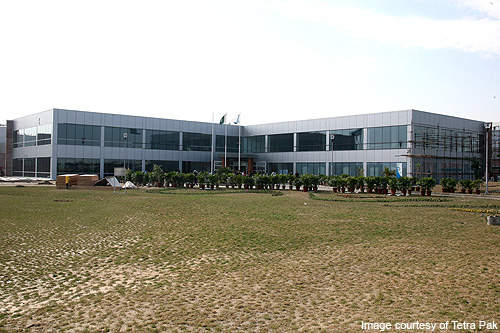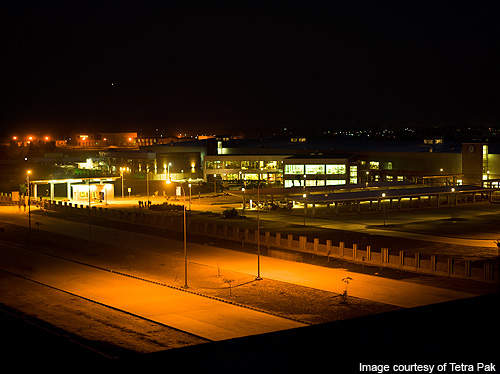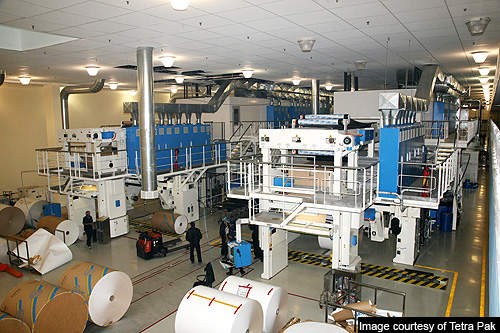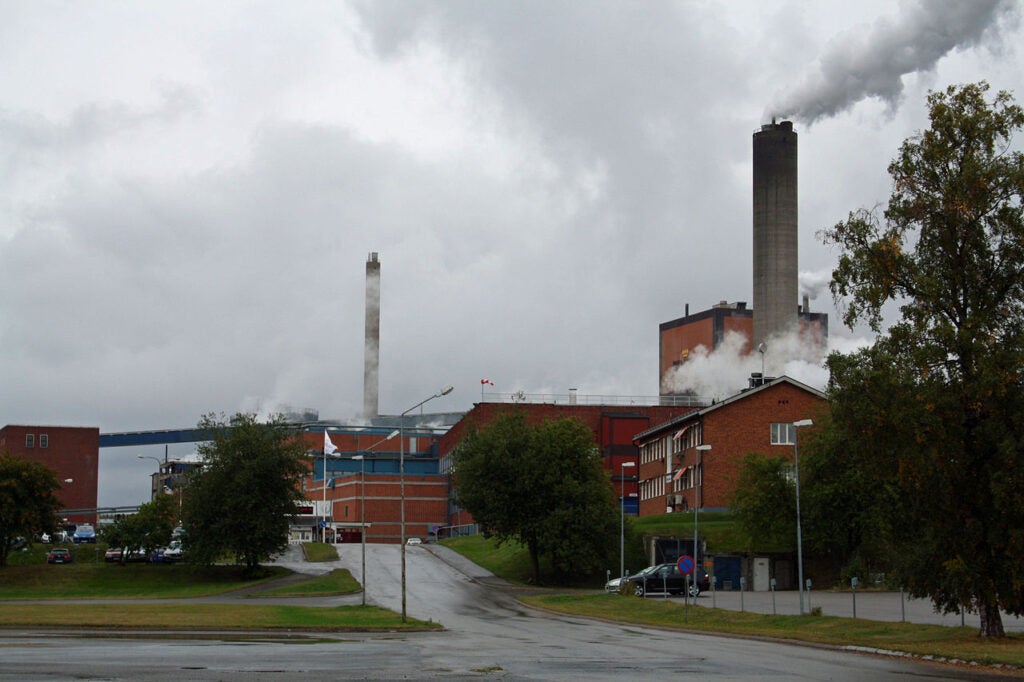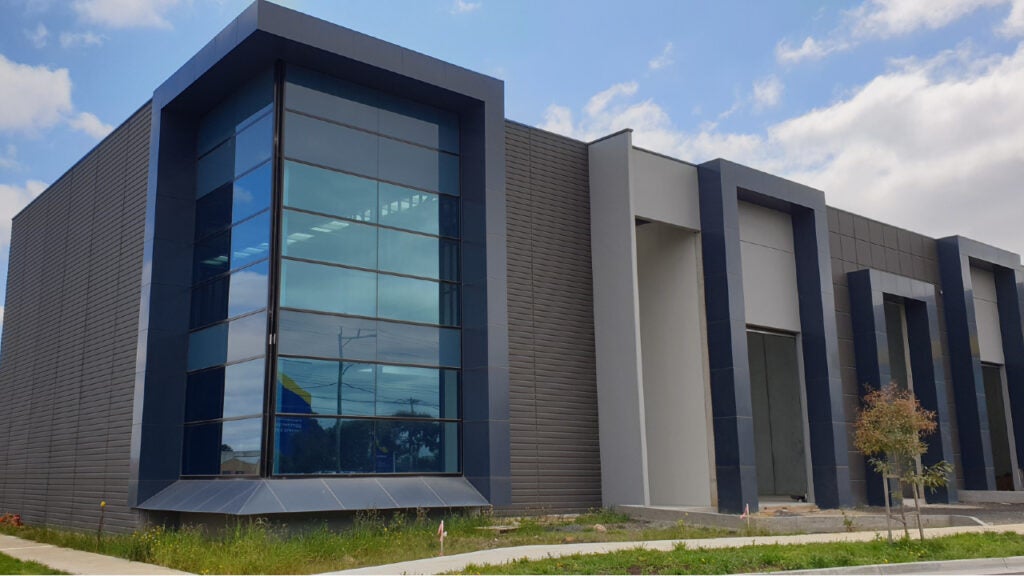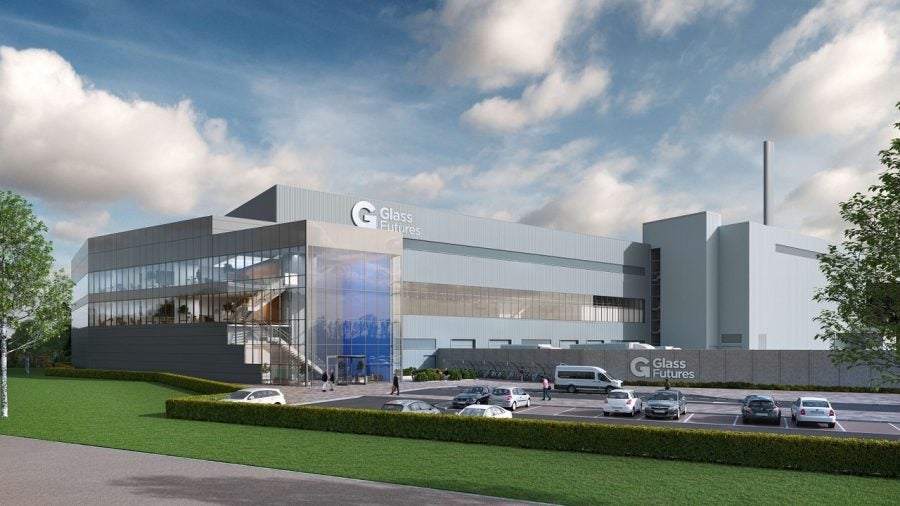Tetra Pak has launched a new, state-of-the-art, carton manufacturing facility in Pakistan in an attempt to increase its manufacturing base in the region.
It is the largest Tetra Pak plant in the Middle East and is situated in the Sundar Industrial Estate (SIE), approximately 45km from Lahore. The industrial estate was developed by Punjab Industrial Estates (PIE), a company owned by the state government of Punjab. SIE has an infrastructure comparable to any modern industrial estate globally. It has established different industrial zones at its premises; a dedicated food processing industrial zone was also available. These features compelled Tetra Pak to choose SIE for the Lahore plant.
Construction began in 2008 and took two years for completion. Test production began in December 2010 and the start up was achieved in two months. Official inauguration was held in March 2011. Tetra Pak’s old production facility in Lahore has been closed and all the production activity shifted to the new plant.
The project required an investment of €92m ($128m).
PIE allotted 44 acres (1.9 million square feet) of land for the plant. The plant occupies approximately 35,000m² (376,700ft² approximately) of area and has the capacity to produce eight billion packages per annum. It can manufacture a variety of cartons including some popular brands such as Tetra Brik Aseptic, Tetra Fino Aseptic and Tetra Classic Aseptic.
Part of the produce is sold in Pakistan and the remaining is exported to the neighbouring countries.
Technology
The Lahore plant is installed with sophisticated equipment and advanced technology. It is endorsed with quality certifications such as World Class Manufacturing (WCM) and ISO 9001 which confirm its ability to produce high quality products at less cost.
The production equipment incorporates a high technology process control system to minimise defects. The material handling process has been automated in order to avoid human errors.
The plant implements SAP and the latest Building Management Systems (BMS).
Printers
The plant features two printing machines of VT Flex 175 ES make. The presses can print 600m per minute. The machines are capable of the Flexo process and Flexo line printing and are equipped with sophisticated inline detection systems to identify any printing defects.
Hygiene
The factory has successfully met all criteria to achieve British Retail Consortium (BRC) / Institute of Packaging (IoP) hygiene management certification as audited by M/s SGS (Certificate is currently awaited).
Hygiene management at the factory includes implementation of hazard analysis of defined critical control points, implementation of a pest management system and implementation of access controls, installation of hand dryers and sanitary equipment and waste segregation, among others.
The environmental management system of the plant is ISO 14001 certified.
Process
The packs are produced using a three-step process, which includes printing, lamination and slitting.
The appropriate printing plates of a given customer are selected and applied to the cylinder of the printing press. The customer-specific graphic design is then printed onto the paperboard.
The printed paperboard is fed into a lamination machine where it joins the plastic and foil layers. At the same time a microfilm coil of aluminium foil is loaded to the laminator.
A gas flame heat treats the paper board to ensure adhesion to the plastic layer. The laminator extrudes liquefied plastic between the roll of aluminium and the heated paper board.
Rollers squeeze all the layers together and create the patented six-layered carton packaging. The printed paper board, with all its protective layers applied, then comes off the back end of the laminator in a large master roll.
The master roll is threaded into a cutting machine called a Slitter. The Slitter then cuts and winds the printed material into smaller individual rolls. A conveyor system sends the cut rolls for shipping to the customer.
Equipment / facilities
The plant is equipped with three slitter machines and inline detection systems for ensuring quality during production. The slitter machines are IMS T2 models and can cut through 1,000m per minute. IMS T2 is the fastest slitter available.
A VT Lam 650 model laminator is installed at the plant. Capable of running at 650m per minute, it is the fastest laminator available. An inline surface detection system in the laminator identifies any internal surface defects. The laminator also features polyethylene (PE) thickness control, which helps to maintain consistency in the plastic layering process.
The Japan Institute of Plant Maintenance (JIPM) considerations are being applied to achieve a zero loss factory using the basic 4M (man, method, machine and material) methodology. It also helps to achieve total productive maintenance (TPM) at the plant. An integrated management system has been adopted to improve production quality. A quality assurance lab has been included to test the raw materials and finished goods.
Defects in all the processes conducted at the plant are monitored with the help of online monitoring equipment.
Other facilities include a design studio, an integrated water treatment plant, backup power, water and gas.
The plant currently operates on diesel power plant and may optionally be run on 2 x 2.6MW heavy fuel gensets.
Constructors and contractors
Geotechnical and specialist civil engineering contractor IVCC Engineering carried out the foundation piling and earthmoving works for the structures.
Habib Rafiq (HRL) was responsible for the piping and erection works.
NESPAK, a local engineering consultancy, supervised the sewerage system, storm water drainage, boundary wall and pavement construction works. The works were completed in November 2010.
Allied Engineering, a dealer of Caterpillar products, supplied the power plant and back up power system for the facility. The order was placed by Tetra Pak in November 2009 for a 7.6MW power plant and a Caterpillar UPS.
Future plans
Tetra Pak plans to nearly double the production capacity of the plant to 16 billion packages per annum in future.
A provision for expansion is incorporated in the plant design. The existing facilities can also be used to manufacture new types of cartons.
Benefits
The new plant is expected to increase the company’s market share in the emerging markets.


